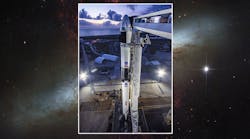As of this afternoon, space travel has evolved. NASA astronauts are still very much involved, but today, a commercial aircraft, the fully automated Crew Dragon space capsule from SpaceX, is transporting a human crew from Earth to the International Space Station (ISS) But when NASA astronauts Doug Hurley and Bob Behnken must guide the Crew Dragon vehicle, it will be via computer touch screen rather than the manual controls of past missions. NASA is teaming with commercial partners such as SpaceX and Boeing in hopes of helping humanity reach further into space.
Hurley and Behnken are veteran pilots but this is their first mission with touchscreen controls, heading for the ISS from NASA's Kennedy Space Center in Florida as part of NASA's Commercial Crew Program. The astronauts are wearing custom space suits designed by SpaceX, with gloves developed for touching the control screens, three-dimensional (3D) printed helmets, and a single umbilical connection for cooling and communications.
Hurley comments on the change from tradition: “Growing up as a pilot my whole career, having a certain way to control the vehicle, this is certainly different. You've got to be very deliberate when you're putting an input in with a touchscreen, relative to what you'd do with a stick. When you're flying an airplane, for example, if I push the stick forward it's going to go down. I have to actually make a concerted effort to do that with a touch screen.” Behnken is somewhat cautious about making the switch to a touchscreen controller: “The right answer for all flying is to not switch to a touchscreen necessarily, but for the task we have. It just might not be the same thing you'd want to use if you were suited up and trying to fly an entry or an ascent.”
